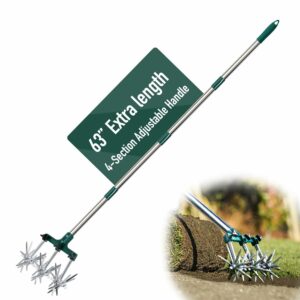Mobile Phone Insurance: Why It Matters and How to Choose the Right Policy
In an age where smartphones are essential to daily life, losing or damaging your device can feel like a disaster. From staying in touch to managing finances, streaming media, and accessing work, mobile phones are vital tools—and they’re not cheap. That’s why mobile phone insurance has become an increasingly popular option for consumers who want financial protection and peace of mind.
This guide breaks down everything you need to know about mobile phone insurance, including the types of coverage, how much it costs, what to look for, and how to get the best deal.
What Is Mobile Phone Insurance?
Mobile phone insurance is a financial product that protects your device against various risks, including accidental damage, theft, loss, and mechanical breakdowns. It works similarly to other forms of insurance: you pay a monthly or annual premium, and in return, the insurer helps cover repair or replacement costs when something goes wrong.
Some policies even include cover for accessories, unauthorized usage if your phone is stolen, or worldwide protection when you travel.
Why Mobile Phone Insurance Is Worth Considering
Modern smartphones can cost anywhere from £300 to over £1,500, making them a significant investment. If your phone breaks or disappears and you’re not covered, replacing it can create a sudden financial burden. Here are a few reasons why phone insurance can be a smart move:
-
Accidents happen: Cracked screens and water damage are among the most common smartphone mishaps.
-
Theft is still a risk: Mobile phones are frequent targets for theft, especially in crowded public spaces.
-
Warranties are limited: Most manufacturer warranties only cover faults—not accidental damage or theft.
-
Essential for work or communication: Losing access to your device can disrupt both personal and professional routines.
Types of Mobile Phone Insurance Cover
When comparing policies, it’s important to know what type of cover is being offered. Here’s a breakdown of the most common types:
| Cover Type | What It Includes |
|---|---|
| Accidental Damage | Covers cracked screens, drops, and liquid damage |
| Theft Cover | Provides a replacement if your phone is stolen |
| Loss Cover | Some insurers offer coverage if the phone is lost entirely (optional add-on) |
| Mechanical Breakdown | Covers faults that occur outside of manufacturer warranty |
| Accessory Cover | Covers items like chargers or headphones that were damaged or stolen with the phone |
| Worldwide Cover | Provides protection while you’re abroad |
Be sure to read the policy wording carefully. Not all insurance policies include every type of cover, and some may require you to add certain protections at an extra cost.
Who Offers Mobile Phone Insurance?
You can get mobile phone insurance from several different sources, each with its pros and cons.
1. Network Providers
Most major mobile networks offer insurance when you take out a contract. Examples include:
These policies are convenient but often come with higher premiums compared to independent providers.
2. Independent Insurers
Specialist companies like Protect Your Bubble, Loveit Coverit, and Switched On Insurance offer competitive deals with flexible plans. These often allow you to cover multiple devices and switch phones during the policy.
3. Bank Accounts
Some packaged bank accounts include mobile phone insurance as part of their monthly fee. For example:
This can be cost-effective if you’re already paying for a premium banking service.
How Much Does Mobile Phone Insurance Cost?
Premiums vary depending on factors such as the phone’s value, your chosen cover type, and your claims history. The table below shows average monthly costs for popular handsets in the UK.
| Phone Model | Average Monthly Premium | Typical Excess |
|---|---|---|
| iPhone 15 Pro Max | £12 – £15 | £75 – £100 |
| Samsung Galaxy S24 | £10 – £13 | £50 – £80 |
| Google Pixel 8 Pro | £8 – £11 | £50 – £80 |
| iPhone SE (2022) | £5 – £7 | £40 – £60 |
Always check whether the excess (the amount you pay when you make a claim) is affordable for you before choosing a policy.
Things to Consider Before Buying
Before signing up for any policy, review these key points:
Exclusions
Insurance doesn’t cover everything. Common exclusions include:
-
Cosmetic damage (scratches or scuffs that don’t affect function)
-
Theft from an unattended vehicle without proper concealment
-
Failing to report loss or theft quickly
-
Damage caused by unauthorized repairs
Always read the fine print.
Claim Limits
Some providers limit how many claims you can make per year, or how quickly you must report an incident.
Proof of Ownership
Most insurers require proof of purchase and may only cover phones bought within the UK.
Replacement Terms
Ask whether your replacement will be brand new, refurbished, or a different model. Some insurers may offer “like-for-like” devices, which might not be what you expect.
Tips to Save Money on Mobile Phone Insurance
While protecting your phone is important, it doesn’t mean you have to overpay. Here’s how to reduce your costs:
1. Compare Multiple Providers
Use comparison platforms or visit individual insurer websites to compare quotes. Price isn’t the only factor—consider what’s included and how reputable the provider is.
2. Only Pay for What You Need
If you’re unlikely to lose your phone, consider skipping loss cover. Likewise, if you’re always in the UK, you may not need worldwide protection.
3. Check Existing Cover
You might already be covered through your bank account or home contents insurance. Some home policies include mobile devices as part of their personal possessions coverage. Always confirm the terms.
4. Bundle Multiple Devices
Some insurers offer discounts if you insure more than one phone or gadget under a single plan.
5. Pay Annually
Many insurers offer a small discount if you pay yearly instead of monthly.
Is Mobile Phone Insurance Right for You?
Mobile phone insurance can be incredibly valuable—but it’s not for everyone. Consider your risk tolerance, how careful you are with your device, and your financial ability to replace a phone out of pocket.
You may not need insurance if:
-
You have an old or low-cost phone
-
You work from home and rarely take your device outside
-
You already have sufficient cover from another source
However, insurance makes sense if:
-
Your phone is worth more than £500
-
You’re frequently on the move or travel abroad
-
You rely on your phone for work or business
How to Make a Claim
If something goes wrong and you’re insured, act quickly:
-
Report the loss or damage immediately to your insurer.
-
File a police report for theft or loss (usually required).
-
Provide proof of ownership (receipt, mobile contract, etc.).
-
Send your phone for inspection if required.
-
Pay the excess and await a repair or replacement decision.
Processing times vary between insurers, but most handle claims within 3–5 working days if all documents are provided.
Final Thoughts
Mobile phone insurance isn’t just a luxury—it’s a smart safeguard against life’s unexpected mishaps. Whether your phone is stolen, damaged, or lost, a solid insurance policy can help you get back on track quickly without draining your wallet.
With so many insurers offering flexible coverage, there’s a policy to suit nearly every user and budget. Take the time to compare plans, read the fine print, and choose the one that best aligns with how you use your phone.
For those who rely on their device daily, mobile phone insurance offers both financial protection and peace of mind.
 Swan SD6060N 1.5 litre Stainless Steel Fryer with Viewing Window, Non-Stick Coating for Easy Cleaning and Adjustable Thermostat with Indicator Light, Detachable Basket Handle, 900W, Silver
Swan SD6060N 1.5 litre Stainless Steel Fryer with Viewing Window, Non-Stick Coating for Easy Cleaning and Adjustable Thermostat with Indicator Light, Detachable Basket Handle, 900W, Silver  Sage - The Custom Loaf - Bread Maker, Brushed Stainless Steel
Sage - The Custom Loaf - Bread Maker, Brushed Stainless Steel  Russell Hobbs Kettle, retro red, 1.7 l, 2400 W, quick cooking function, water temperature display in retro design, filling level marking, optimised pouring spout, vintage 21670-70
Russell Hobbs Kettle, retro red, 1.7 l, 2400 W, quick cooking function, water temperature display in retro design, filling level marking, optimised pouring spout, vintage 21670-70  Sensio Home Personal Blender Smoothie Maker - BPA Free 1L Jar & 600ml Portable Sports Bottle, Electric Blender for Fruit, Vegetables, Protein Shakes, Crush Ice & Frozen Fruit, 2 Speed + Pulse 350W
Sensio Home Personal Blender Smoothie Maker - BPA Free 1L Jar & 600ml Portable Sports Bottle, Electric Blender for Fruit, Vegetables, Protein Shakes, Crush Ice & Frozen Fruit, 2 Speed + Pulse 350W  Russell Hobbs Honeycomb Electric 1.7L Cordless Kettle (Fast Boil 3KW, Grey premium plastic, matt & high gloss finish, Removable washable anti-scale filter, Push button lid, Perfect pour spout) 26053
Russell Hobbs Honeycomb Electric 1.7L Cordless Kettle (Fast Boil 3KW, Grey premium plastic, matt & high gloss finish, Removable washable anti-scale filter, Push button lid, Perfect pour spout) 26053  Rolling Kitchen Island Cart with Solid Wood Countertop Spice Rack and Wheels Portable Kitchen Cart (1 Piece)
Rolling Kitchen Island Cart with Solid Wood Countertop Spice Rack and Wheels Portable Kitchen Cart (1 Piece)  150FT Expandable Flexible Garden Hose with 7 Setting Professional Water Spray Nozzle
150FT Expandable Flexible Garden Hose with 7 Setting Professional Water Spray Nozzle  Swan SK14610FUS Nordic Cordless Jug Kettle with Fast Boil Technology, Overheat Protection, Soft Touch Handle, 1.7L, 3KW, Fuchsia Rose, Fusia
Swan SK14610FUS Nordic Cordless Jug Kettle with Fast Boil Technology, Overheat Protection, Soft Touch Handle, 1.7L, 3KW, Fuchsia Rose, Fusia  Salter EK3131 Espressimo Coffee Machine – 4-Shot Espresso Maker, Milk Frothing Wand, Includes 240 ml Glass Carafe, Barista Style Latte And Cappuccino, 5-Bar Pressure, Stainless Steel Filter, 870W
Salter EK3131 Espressimo Coffee Machine – 4-Shot Espresso Maker, Milk Frothing Wand, Includes 240 ml Glass Carafe, Barista Style Latte And Cappuccino, 5-Bar Pressure, Stainless Steel Filter, 870W  Revel CCM104 Wet and Dry Grinder, Plastic, White/Green
Revel CCM104 Wet and Dry Grinder, Plastic, White/Green  Rotary Cultivator Set, 25"-63" Adjustable Gardening Rotary Tiller and Hand-Held Garden Cultivator Tool with Steel Detachable Tines, Reseeding Grass or Soil Mixing
Rotary Cultivator Set, 25"-63" Adjustable Gardening Rotary Tiller and Hand-Held Garden Cultivator Tool with Steel Detachable Tines, Reseeding Grass or Soil Mixing  Rainberg 122 x 38cm Folding Ironing Board with Jumbo Iron Rest, Adjustable Height Up To 93cm, Foldable & Collapsible Ironing Table (Black)
Rainberg 122 x 38cm Folding Ironing Board with Jumbo Iron Rest, Adjustable Height Up To 93cm, Foldable & Collapsible Ironing Table (Black)  AOUXIN 3 Piece Rattan Garden Furniture Set, Outdoor Sectional Sofa with Coffee Table, Black Wicker, White Cushions
AOUXIN 3 Piece Rattan Garden Furniture Set, Outdoor Sectional Sofa with Coffee Table, Black Wicker, White Cushions